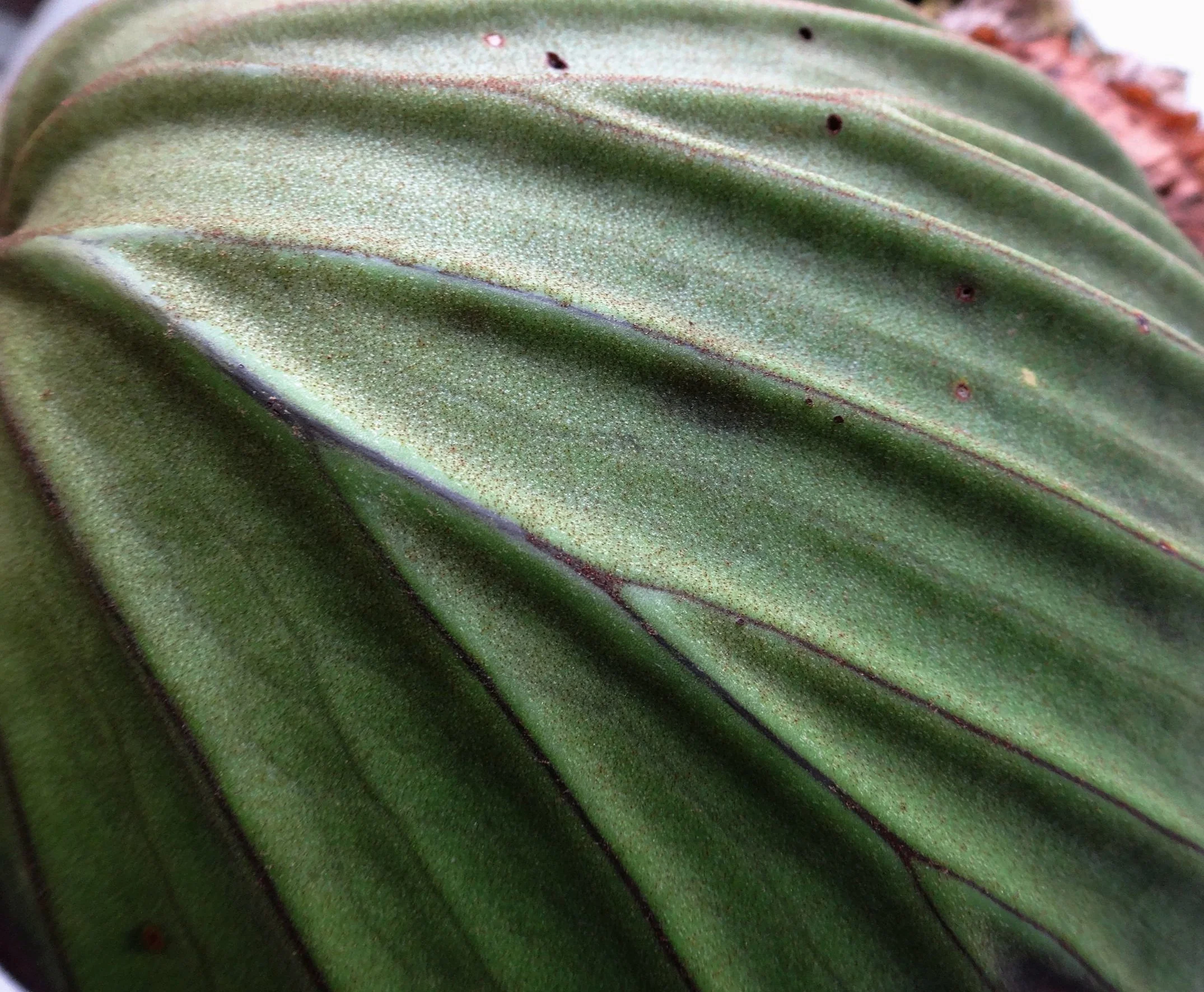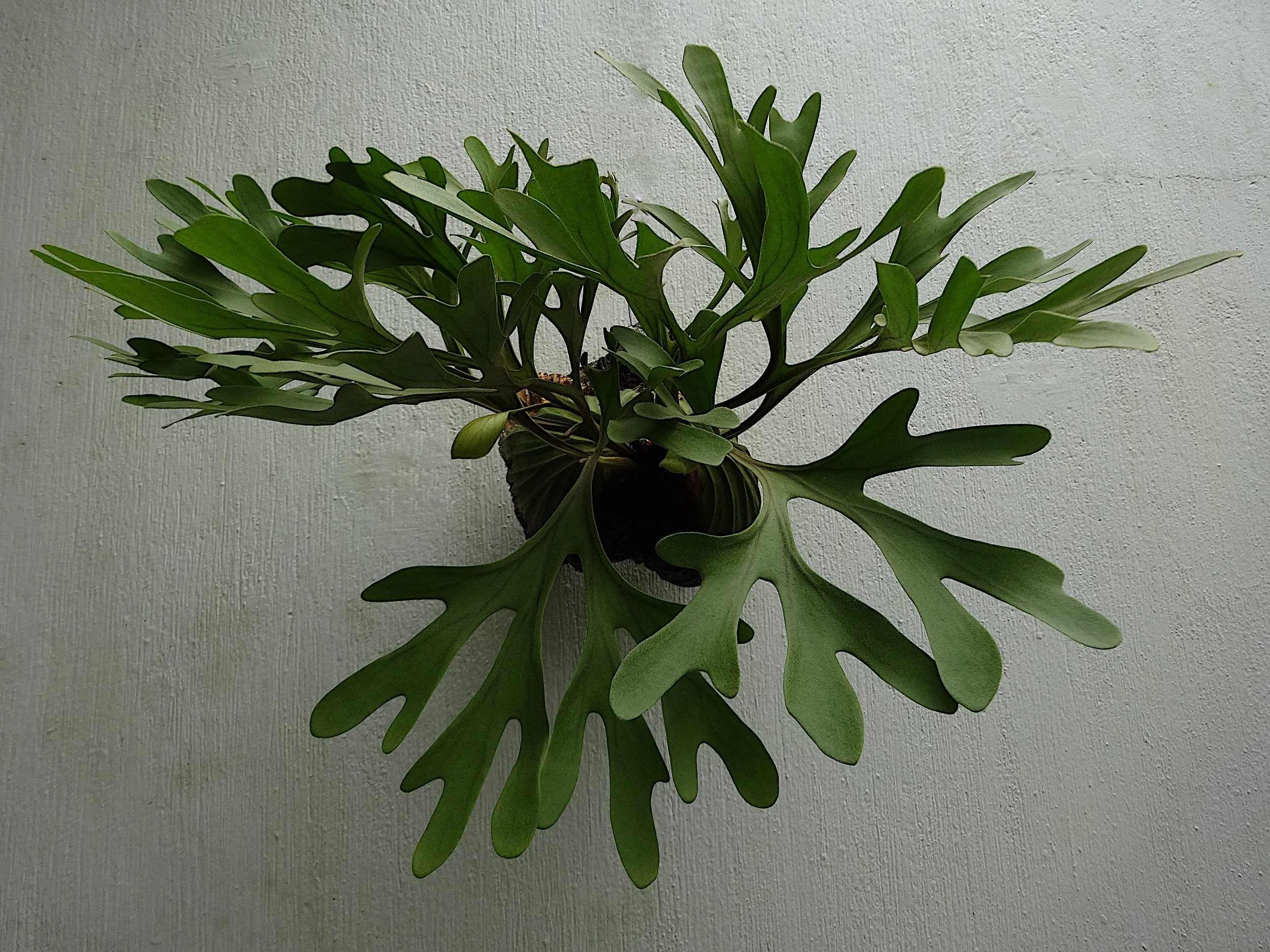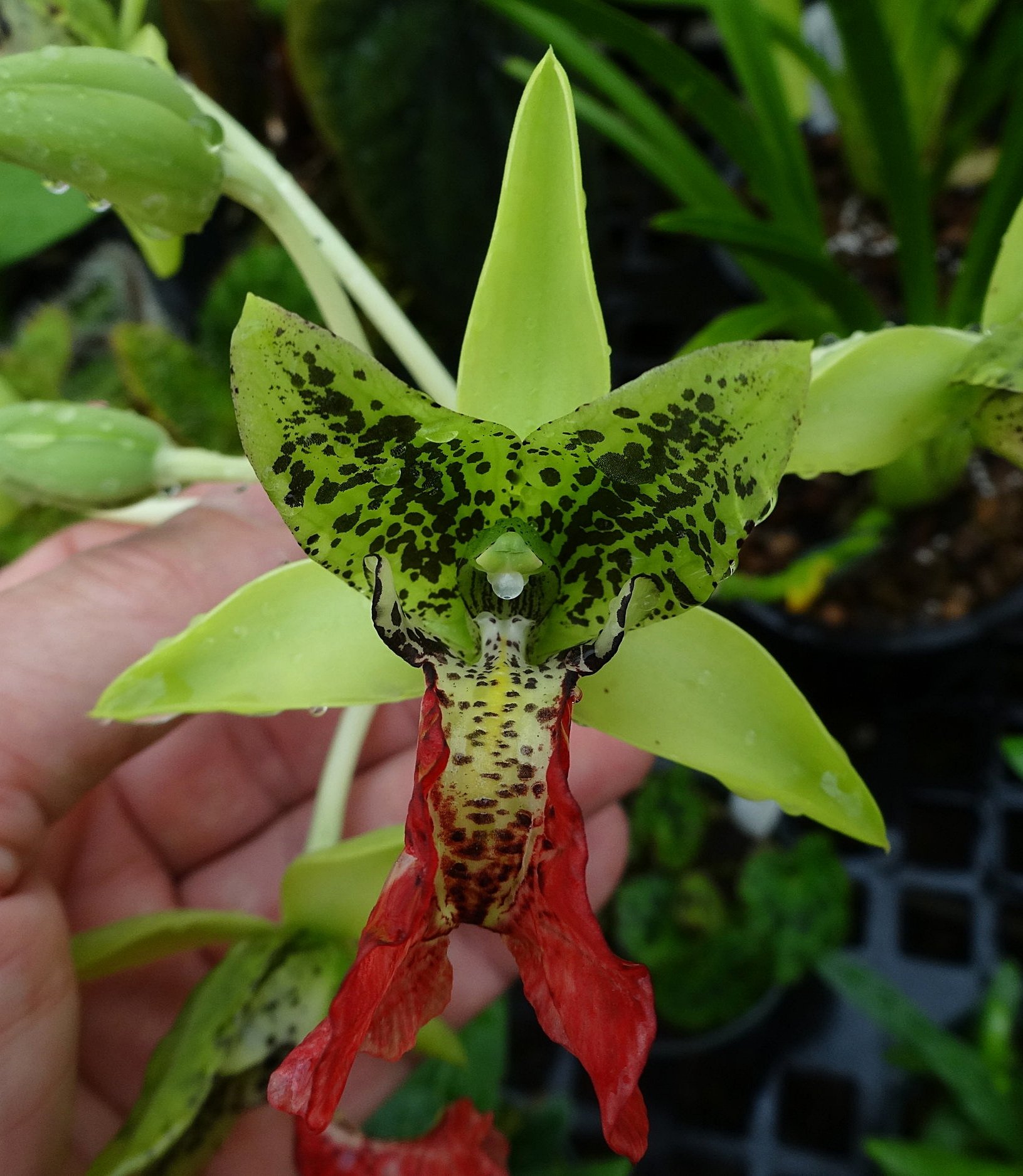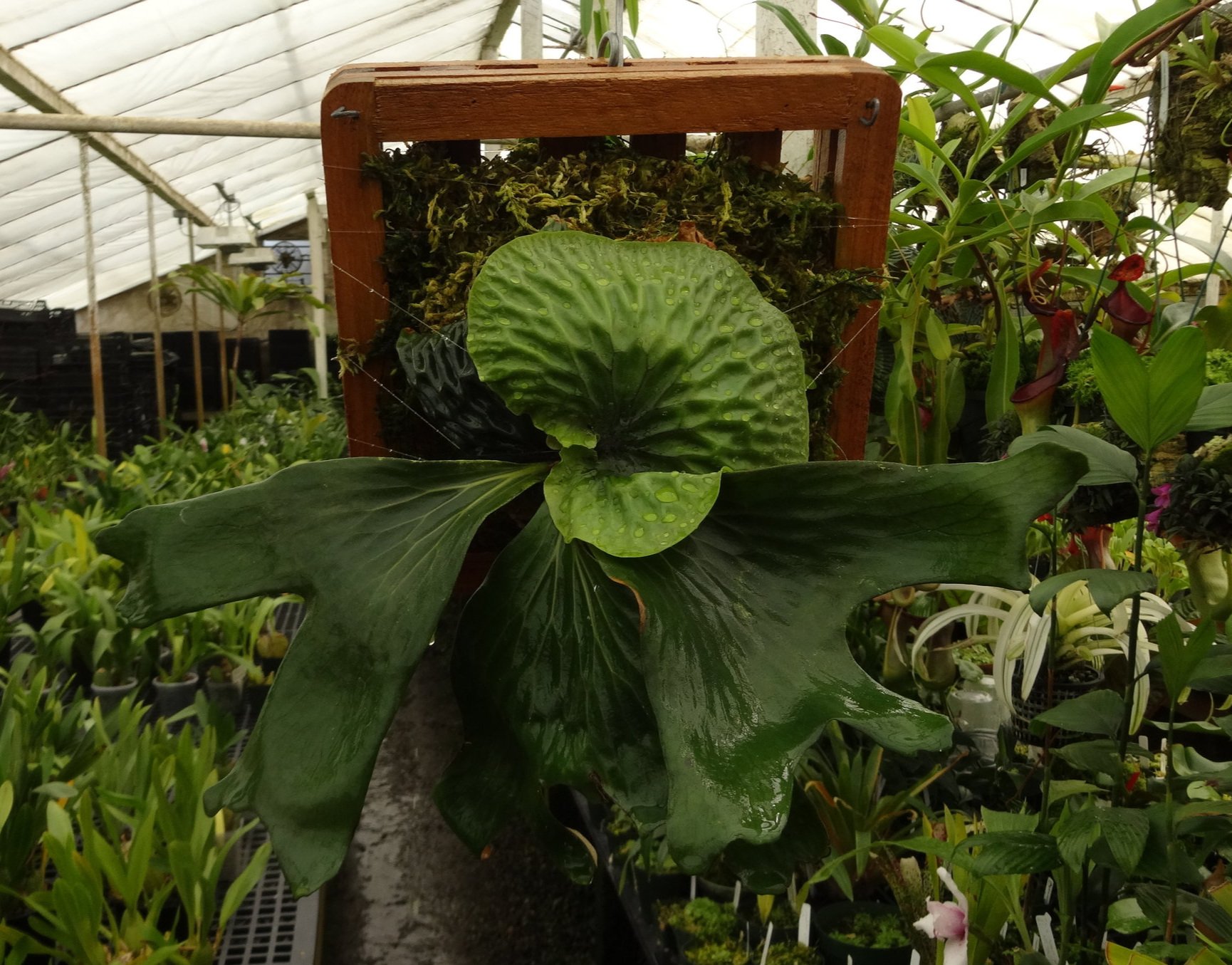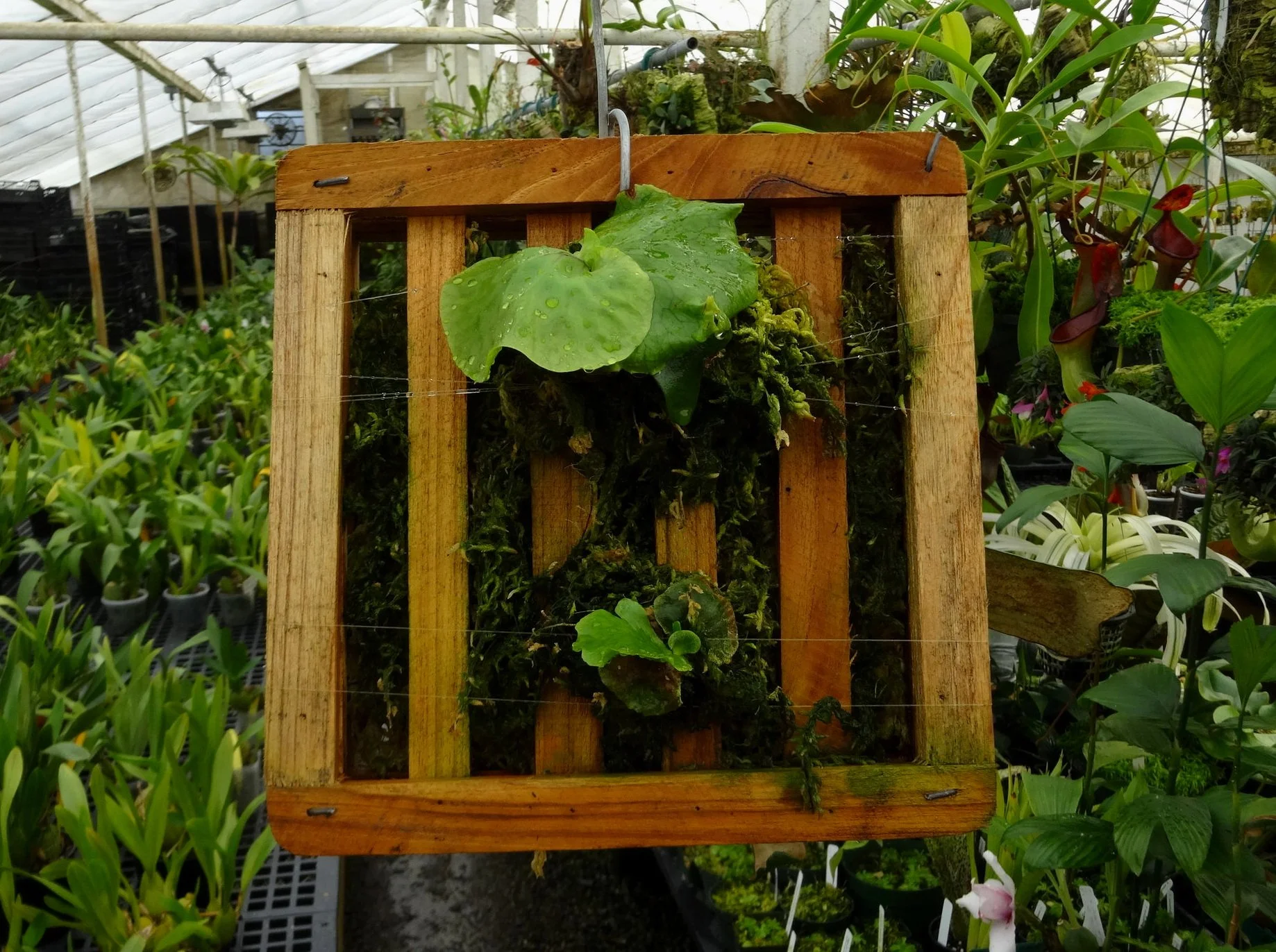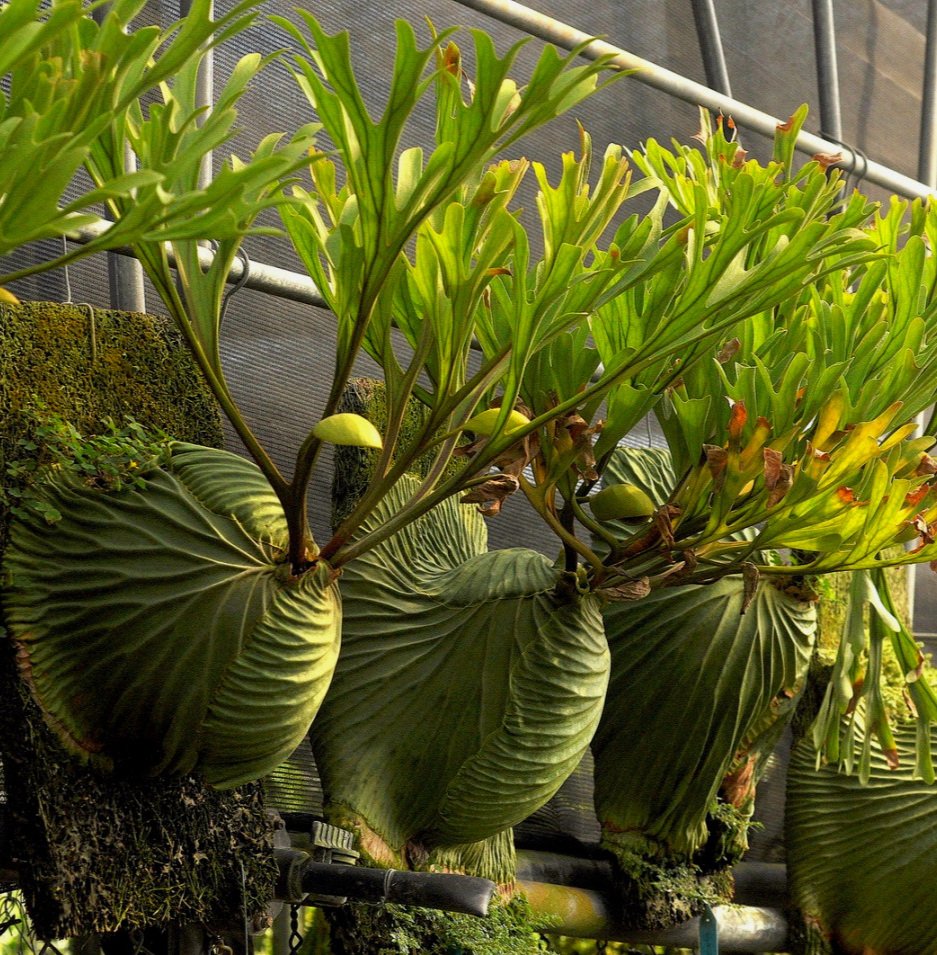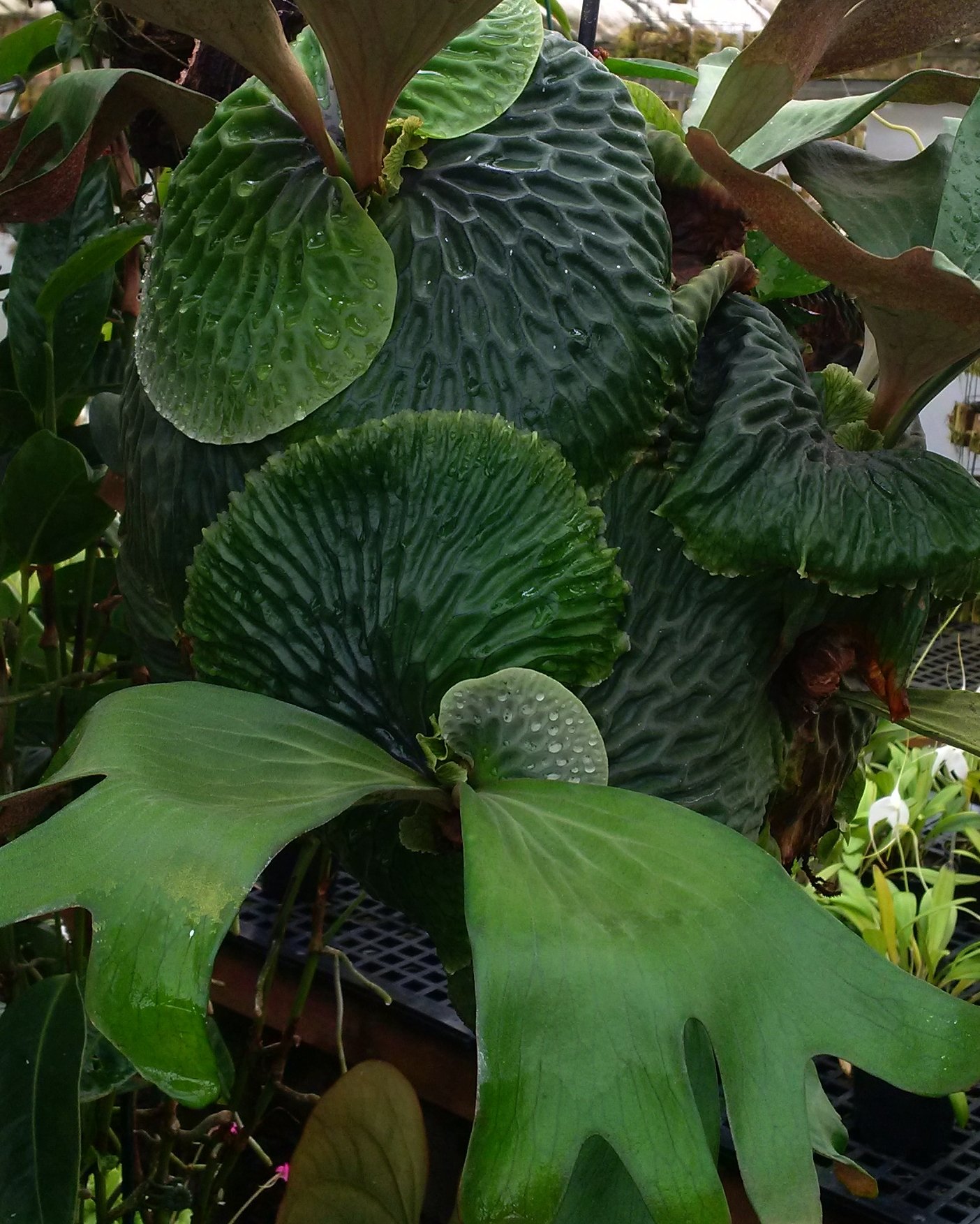Platycerium madagascariense - Waffles and Dream
The Tastiest type of Waffle!
by Jay Vannini
Developing shield frond on a young Madagascan dwarf staghorn fern, Platycerium madagascariense.
Platycerium madagascariense is a remarkable and very sought-after staghorn fern species occurring mostly as a branch epiphyte restricted to the remaining premontane wet forests of eastern and northern Madagascar. At least one tongue-twisting local name for it has been documented and annotated on an herbarium sheet at a US botanical garden; "Ramandrakotra". It is, broadly-speaking, one of the more cool-growing “rare” staghorn fern species since it originates at elevations from about 1,300-3,900’/400-1,200 m in nature. It is also the smallest staghorn species or hybrid when mature (~22"/55 cm across fertile frond span), which makes it especially interesting to space-constrained small garden or apartment growers. It also offsets freely, even in youth, which distinguishes it from many other commercially-valuable platyceriums.
A pair of wooden basket-mounted Platycerium madagascariense offsetting vigorously 18 months after transplant.
This species is extremely popular among tropical fern growers in the EU, Asia and the US despite a rather mixed past record in cultivation. Recently, its availability in the ornamental trade has increased exponentially when compared to the the limited, mostly wild accessions that made their way to market in the 1980s-90s. Both spore-grown plants and established clonal offsets are now readily available from staghorn fern specialists and online nurseries that deal in rare tropical ornamental plants. A number of man-made hybrids are also occasionally available from some nurseries and hobbyist sellers, including crosses with P. elephantotis (Erawan), P. alcicorne ex-Madagascar (two named hybrids; Dawboy and Larry Weed), P. quadridichotomum (Harry Luther), P. andinum (Roy Vail) and P. alcicorne ex-Africa (Horne’s Surprise). There are also a few spontaneous hybrids involving an unknown second parent, such as Durval Nunes (although allegedly another cross x P. quadridichotum). At least one of these hybrids are now available as starts from micropropagation in Taiwan and Thailand (P. Erawan ‘Emerald Queen’).
Two interesting hybrids involving Platycerium madagascariense in the author’s collection. Left partial, P. ‘Horn’s Surprise’ and right, P. Erawan ‘Emerald Queen’.
As higher quality, artificially-propagated P. madagascariense make their way into horticulture, more growers are experiencing success maintaining this species in their collections over the long-term. Early accessions were reputed to be very delicate and slow-growing, which fostered a narrative that this very desirable fern species was exceptionally challenging or nigh impossible in cultivation. In spite of recent successes, it continues to have a reputation for being delicate with some nurserymen and growers. But, as images here demonstrate, with intermediate environmental conditions and plenty of good-quality water, some clones can be very vigorous and attain large sizes (for the species) from very small offsets in time spans comparable to those required to produce specimen-sized plants of the more common staghorn fern species. Plants from spore are far slower than those started from 2"/5 cm pups from rhizomes, taking from five to eight years to mature depending on cultural conditions.
Shield frond and spore-bearing patch detail on specimen plant
Platycerium madagascariense thrives under very bright, humid, "cool tropical" and intermediate conditions. My observations, both at my home in Guatemala and in a central coastal California greenhouse, indicates that it can be grown successfully alongside P. ridleyi and other sometimes delicate staghorn fern species if the temperature is not kept too high for prolonged periods. In my experience in both countries, these ferns are unfazed by brief dips into the 40s F/8 C and pops to highs into the 90s F/35 F. Unlike P.ridleyi, the root mass of P. madagascariense should not be allowed to dry out for any prolonged period of time. Feeding should be frequent but consistently low dose to avoid marginal burn on the fronds. Most soluble orchid fertilizers designed to be drench or spray fed are up to the task at labeled rates. High quality water, with low TDS (i.e. rain, distilled, RO/RODI, etc.) is required to succeed with this species. Well-grown adult plants should hold between two to five fertile fronds in good condition. I establish offsets in NZ sphagnum in 4"/10 pots, then transfer to tree fern mounts when the first fertile fronds are produced by the young plants. Unlike other members of this genus, I find that it does not grow well on cork plaques. Redwood mounts are used by some growers with apparent success.
Spore-grown greenhouse recruits of Platycerium madagascariense in California.
Its primary pests are mealybugs that often congregate around the meristem where they can be difficult to detect at first. Control is straightforward, but emerging fronds should be checked with some frequency to avoid mealies or aphid activity producing deformed new growths. Occasional free-riders can be taken care of before they invite friends and family over with rubbing alcohol and water at 1:1, applied with a fine watercolor brush.
Many fern collectors have noted the remarkable convergence between the channeled appearance of the shield fronds of the two Platycerium species that are currently accepted as being myrmecophytic; P. madagascariense and the tropical SE Asian native, P. ridleyi. While they are not particularly closely-related, it is tempting to speculate that these attractive shield fronds, whose morphology is unique in the genus, provide a kind of ready-made home or pathways for ants, much as is evident in the channeled interiors of the domatia of other ant ferns.
Famed Sobralia orchid breeder and author (“The Orchid Whisperer”) Bruce Rogers pointing out one of the author’s flowering Cymbidiella rhodochila with attendant staghorns, May 2019. Note one of the new inflorescences growing right to left just at the brim of his hat.
Where this species of staghorn fern and the red-lipped cymbidiella (Cymbidiella pardalina), a large-growing and showy-flowered orchid, occur in sympatry in east-central Madagascar they normally form a mutualistic relationship together with ants. I have not been able to determine what ant genera are associated with these two plant species, but it is commonly noted by botanists who have collected them. Since the fern has a much wider distribution and elevational range than the orchid (which appears to be restricted to ~1,950-2,600’/600-800 m), there are large swaths of eastern and northern Madagascar where they presumably do not co-exist. A careful online search for images of Platycerium madagascariense will reveal at least a couple of in situ photos of the fern growing as a branch epiphyte on high trees, absent the orchid. There are published reports that also link this species to the Madagascan (and East African) mimosa, Albizia gummifera that, as a canopy tree, is also known to host ants as well as P. elephantotis and P. stemaria elsewhere in its range on the African mainland. The orchid is very attractive both in and out of flower (lime green is a rare color in orchid blooms), with healthy pseudobulbs to 6"/15 cm and strap-like leaves to a yard/meter in length.
Some botanical gardens and private growers have experimented with mounts combining these two very attractive Malagasy plant species for display purposes. I set up two such mounts in 10”/25 cm net pots during the summer of 2015 using young mature plants of both species. Hanging in a warm, humid but well-ventilated greenhouse, both very quickly grew to mature sizes. Due to recent requests for divisions of these plants from clients, I decided to break up one of the mounts recently (August 2018) and found that the roots of the orchid had completely infiltrated the nest fronds of the ferns, and that the fern rhizomes had completely infiltrated the orchid’s root mass and growing media in the net pot both were planted in. The orchids were seed-grown siblings and plant growth in both mounts was almost identical.
Mature Platycerium madagascariense showing how roots from a Cymbidiella pardalina have completely infiltrated its rood mass and dead leaf tissue behind the shield fronds.
For longer-term displays, I would definitely recommend planting in larger baskets (12-14"/30-35 cm) or mounting a large tree fern or manzanita log, to minimize the need for frequent root disturbance. Above, I have shown two images of a recently-established mount (taken April 2019) on a 10”/25 slat basket using three starts; one mature and two small offsets. This mount is six months old and should be completely covered by the ferns on both sides in another year.
I have included several photos showing the breakup of the mount and subsequent plant material derived from the planting after three years. Note that a number of fern offsets had been harvested from the mount in the 18 months prior to its breakup, so it can pup prolifically under optimum conditions.
Mature plants of both fern and orchid species grown together in an 8"/20 cm net pot for three years. May 2018.
I highly recommend that growers with enough space to display this very interesting example of mutualism do so when the opportunity to obtain plant material avails itself. In lieu of growing the partnership due to space limitations or a lack of interest in this particular orchid, the fern alone is a fantastic addition to any ornamental plant collection that can attend to its requirements.
Several mature Madagascan staghorn ferns and assorted pups removed from the display mount shown and discussed above. Note the dense rhizome mass on the lower right with multiple offsets sprouting from this clump
All content ©Exotica Esoterica LLC® 2018-2025 and ©Jay Vannini 2018
Follow us on:




